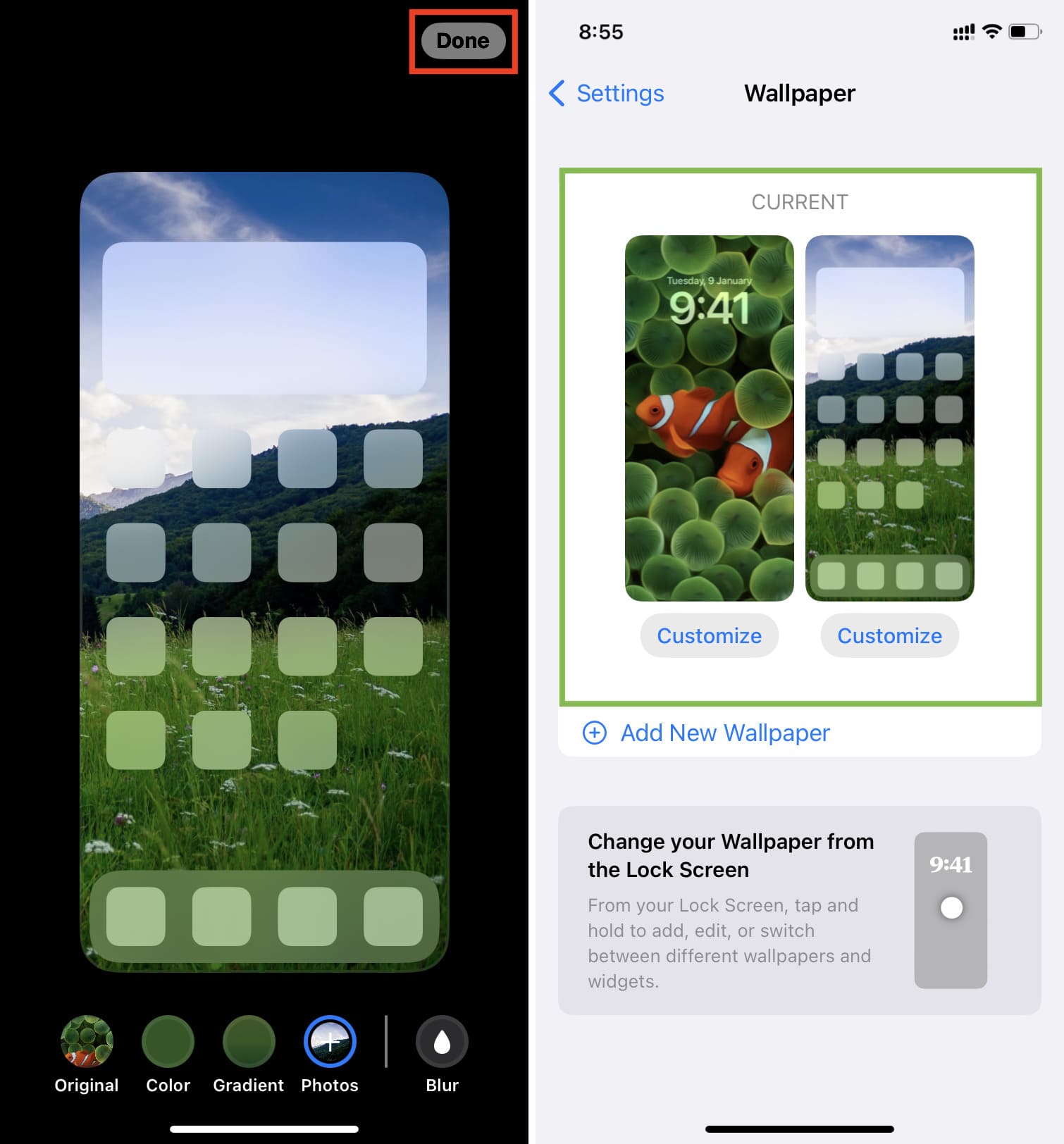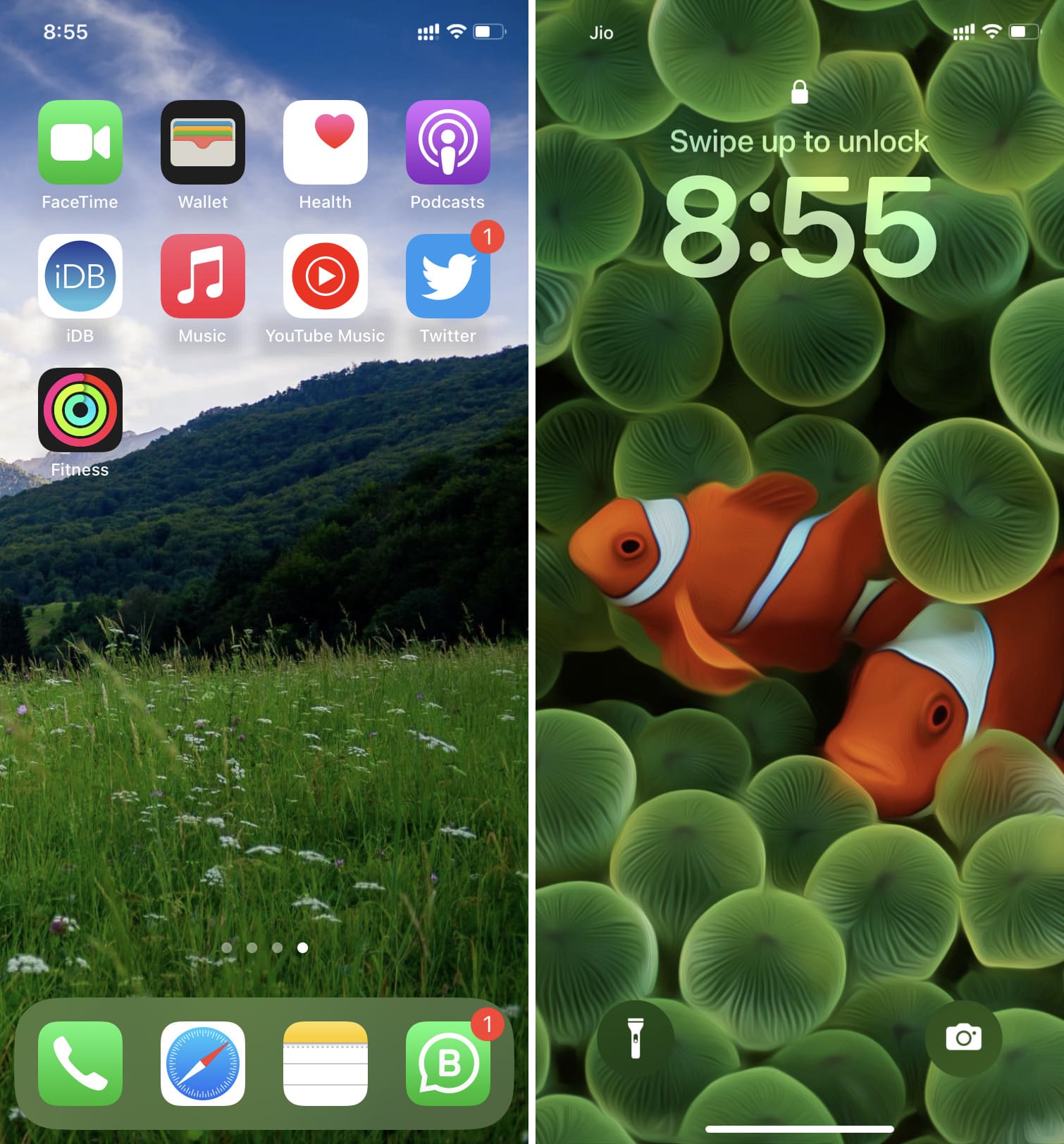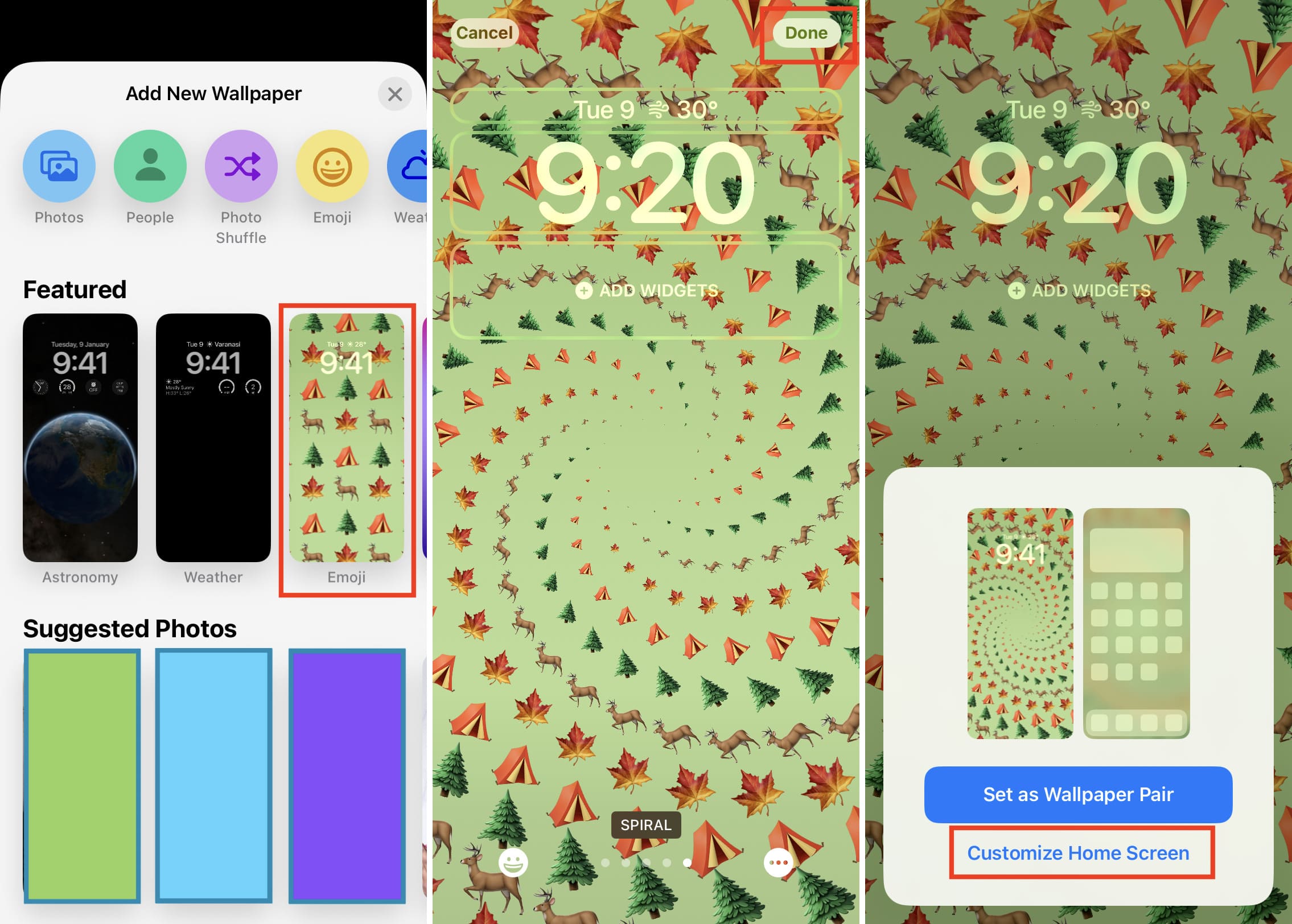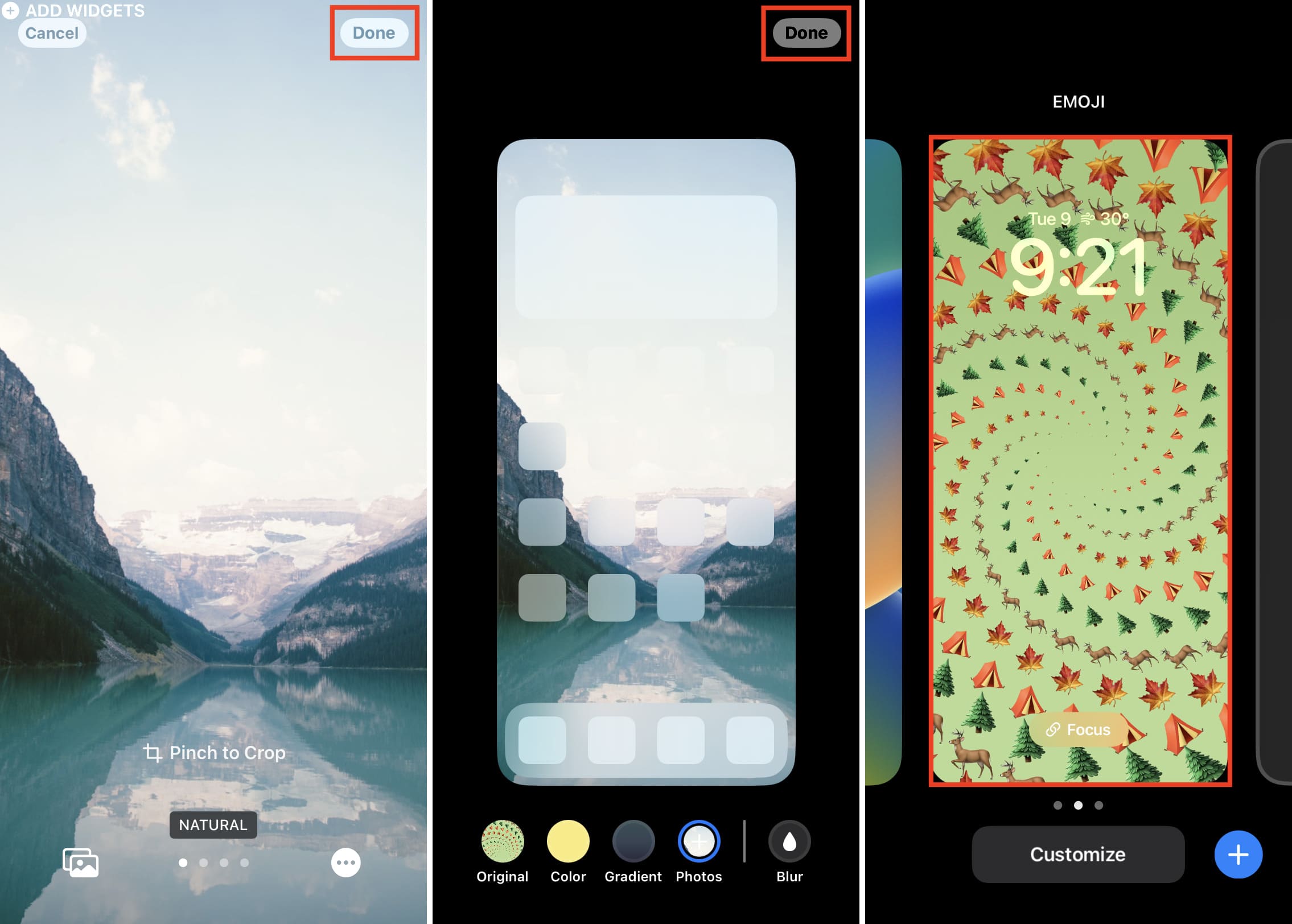Beyond the Surface: Unveiling the Differences Between iPhone Lock Screen and Wallpaper
Related Articles: Beyond the Surface: Unveiling the Differences Between iPhone Lock Screen and Wallpaper
Introduction
In this auspicious occasion, we are delighted to delve into the intriguing topic related to Beyond the Surface: Unveiling the Differences Between iPhone Lock Screen and Wallpaper. Let’s weave interesting information and offer fresh perspectives to the readers.
Table of Content
Beyond the Surface: Unveiling the Differences Between iPhone Lock Screen and Wallpaper
/article-new/2022/10/2different-home-lock-screen-wallpapers.jpg)
The iPhone, a ubiquitous symbol of modern technology, offers a canvas for personal expression through its visually captivating displays. While both lock screen and wallpaper contribute to this aesthetic, they serve distinct purposes, offering varying degrees of personalization and functionality. Understanding the nuances of each, their respective strengths, and how they complement each other, allows for a more enriching and tailored user experience.
The Lock Screen: Security and First Impressions
The lock screen, the first visual encounter upon awakening your iPhone, serves a dual purpose: security and aesthetic appeal. It acts as a digital gatekeeper, preventing unauthorized access to your device’s contents. Beyond its security role, the lock screen presents a unique opportunity for personalization. It’s the first glimpse into your digital world, allowing you to showcase your individual style and preferences.
Customization Options:
- Images: The lock screen can be adorned with a chosen image, whether a personal photograph, a captivating artwork, or a visually stimulating abstract design.
- Widgets: iOS 16 introduced widgets to the lock screen, enabling users to access essential information directly from the locked state. These widgets can display weather updates, calendar appointments, music controls, or even track fitness goals.
- Clock Styles: The lock screen offers a range of clock styles, from minimalist digital displays to intricate analog designs, allowing users to choose an aesthetic that complements their overall visual preferences.
- Focus Modes: Lock screen customization extends to Focus Modes, allowing users to tailor their device’s appearance and functionality based on specific scenarios, such as work, sleep, or driving.
The Wallpaper: A Deeper Layer of Personalization
The wallpaper, unlike the lock screen, remains visible throughout the user experience, serving as the backdrop for the iPhone’s home screen, app icons, and various other elements. It provides a consistent visual theme, adding a personal touch to the overall user interface.
Customization Options:
- Image Library: The iPhone’s vast image library serves as a source for wallpaper selection, allowing users to choose from personal photographs, downloaded images, or even dynamic wallpapers that change with the time of day.
- Live Photos: Adding a touch of dynamism, Live Photos can be set as wallpaper, bringing movement and life to the static display.
- Color Palette: The wallpaper can be chosen to complement the overall color scheme of the iPhone, creating a harmonious and visually cohesive user experience.
Beyond Aesthetics: Functionality and User Experience
While both lock screen and wallpaper offer avenues for personalization, their impact extends beyond mere visual appeal. They influence the user experience in subtle but significant ways.
Lock Screen: A Gateway to Information and Control
- Notifications: The lock screen serves as a central hub for notifications, displaying alerts, messages, and reminders. This functionality allows users to stay informed without unlocking their device.
- Quick Actions: Lock screen widgets provide quick access to frequently used features, such as controlling music playback, setting alarms, or launching specific applications.
- Security: The lock screen’s security features, such as passcode or Face ID, ensure the protection of sensitive data, adding a layer of privacy and peace of mind.
Wallpaper: A Visual Foundation for User Interface
- Visual Harmony: The wallpaper serves as a visual anchor for the iPhone’s home screen, creating a cohesive aesthetic that complements the app icons and other elements.
- Clarity and Focus: A well-chosen wallpaper can enhance the visual clarity of the home screen, making icons and text more prominent and easier to navigate.
- Mood Setting: The wallpaper can influence the overall mood and atmosphere of the user experience, creating a calming, energizing, or inspiring environment.
The Symbiotic Relationship: Lock Screen and Wallpaper Working Together
While lock screen and wallpaper serve distinct functions, they complement each other in creating a personalized and engaging user experience. They can be used to create a cohesive visual theme, enhance the overall aesthetic, and provide a seamless transition between locked and unlocked states.
- Theme Consistency: By using similar color palettes, imagery, or design elements, both lock screen and wallpaper can be coordinated to create a unified visual identity that reflects the user’s personality and preferences.
- Visual Flow: The transition from lock screen to home screen becomes more fluid and engaging when the two elements complement each other, creating a visually harmonious experience.
- Enhanced Functionality: The lock screen’s widgets can seamlessly integrate with the wallpaper, offering a visually consistent and user-friendly access point for essential information and quick actions.
Frequently Asked Questions
1. How do I change my iPhone lock screen and wallpaper?
Changing the lock screen and wallpaper on an iPhone is a straightforward process:
- Lock Screen: Open the Settings app, tap on "Wallpaper," then choose "Customize Lock Screen." Select an image from your library or choose from a curated collection. You can also customize the clock style, widgets, and Focus Mode settings.
- Wallpaper: Open the Settings app, tap on "Wallpaper," then choose "Choose a New Wallpaper." Select an image from your library or choose from a curated collection. You can also choose to set the selected image as both lock screen and home screen wallpaper or only as the home screen wallpaper.
2. Can I use the same image for both lock screen and home screen?
Yes, you can use the same image for both the lock screen and home screen. However, it’s important to consider how the image will look on each display. A busy or detailed image might be overwhelming on the lock screen, while a minimalist design might be too plain for the home screen.
3. How do I create a dynamic wallpaper?
iOS offers dynamic wallpapers that change based on the time of day. To create a dynamic wallpaper, open the Settings app, tap on "Wallpaper," and then choose "Choose a New Wallpaper." Select a dynamic wallpaper from the available options. The wallpaper will automatically change its appearance throughout the day, offering a visually stimulating experience.
4. Can I add my own photos to my lock screen and home screen?
Yes, you can add your own photos to your lock screen and home screen. Simply choose the "Choose a New Wallpaper" option in the Settings app, tap on "Photos," and select the image you want to use.
5. Are there any limitations on the size or format of the images I can use?
The iPhone’s operating system has specific requirements for lock screen and home screen images. These requirements may vary depending on the iPhone model and iOS version. It’s recommended to use high-resolution images in formats like JPEG or PNG to ensure optimal quality and display.
Tips for Choosing Lock Screen and Wallpaper
- Reflect Your Personality: Use images that represent your interests, hobbies, or personal style to make your iPhone truly your own.
- Consider the Context: Think about the purpose of your iPhone and choose images that complement its usage. For example, a calming image might be suitable for relaxation, while a motivational image might be inspiring for work.
- Experiment with Different Styles: Don’t be afraid to try different images, colors, and designs to find a combination that you love.
- Stay Updated: Keep an eye out for new wallpaper options, including dynamic wallpapers and themed collections, to keep your iPhone’s appearance fresh and exciting.
Conclusion
The iPhone’s lock screen and wallpaper serve as more than just visual elements; they are integral components of the user experience, offering personalization, functionality, and a canvas for self-expression. By understanding their distinct roles and the customization options available, users can create a truly personalized and engaging digital environment. Whether it’s showcasing a cherished memory on the lock screen or setting a calming mood with the home screen wallpaper, these seemingly simple features hold the power to transform the way we interact with our iPhones, reflecting our individuality and enhancing our daily digital interactions.








Closure
Thus, we hope this article has provided valuable insights into Beyond the Surface: Unveiling the Differences Between iPhone Lock Screen and Wallpaper. We hope you find this article informative and beneficial. See you in our next article!
